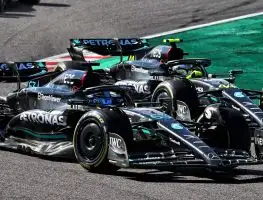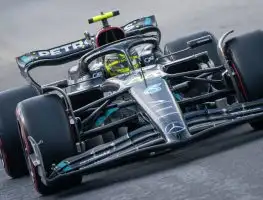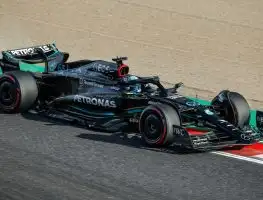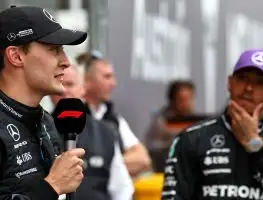Mercedes make major admission over F1 2022 regulations overhaul
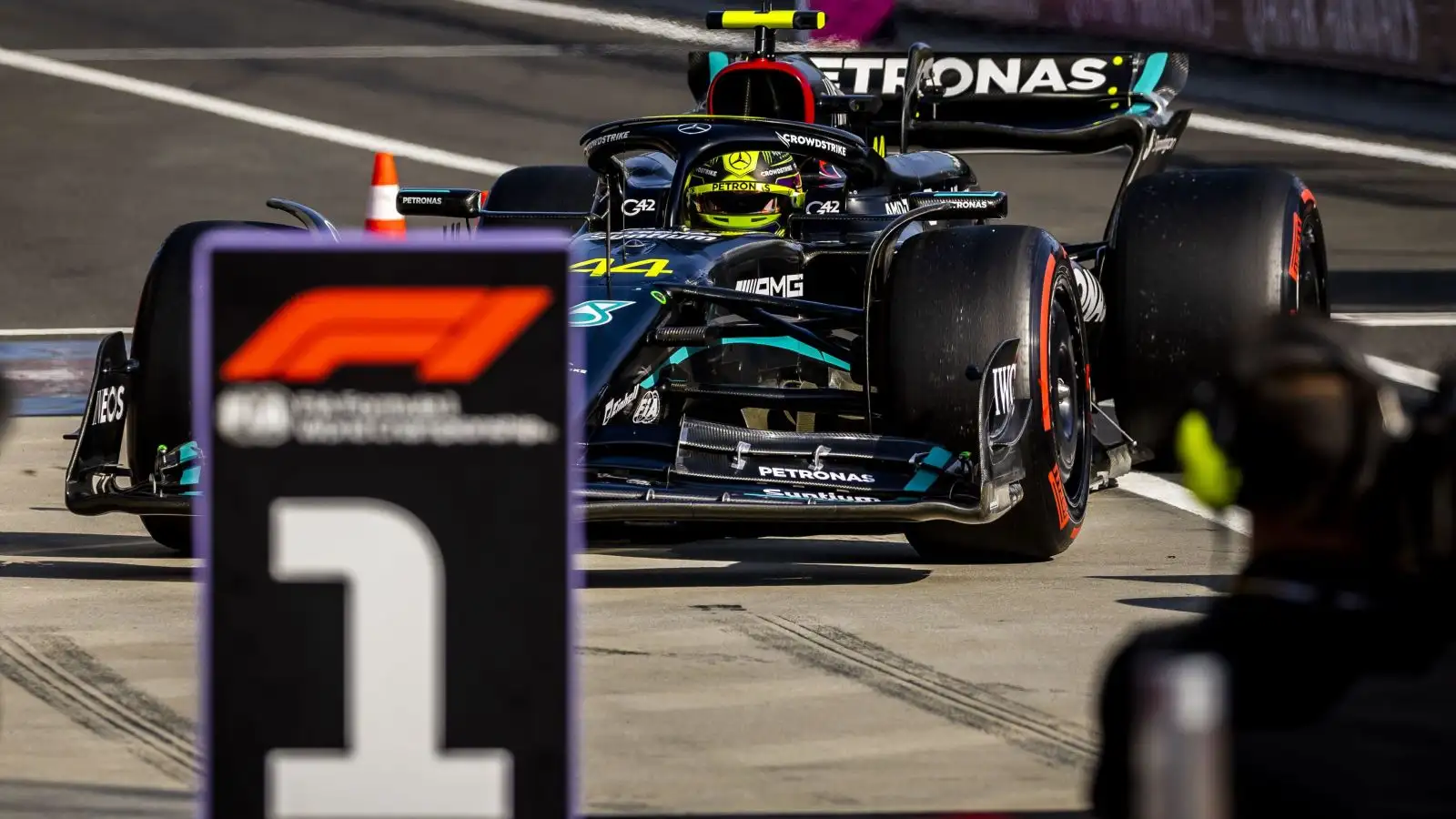
Lewis Hamilton, Mercedes, approaches '1' sign after claiming pole. Hungary, July 2023
Mercedes chief technical officer Mike Elliott has admitted the team fell into a “trap” of the 2022 regulations by running their car too close to the ground.
Formula 1 made sweeping regulation changes with a move to ground effect aerodynamics in 2022 with the aim of making the cars easier to follow, but a drawback of that was found by the cars’ performance being optimised by being close to the ground.
With that came the phenomenon of ‘porpoising’ which so plagued Mercedes last season, the ‘bouncing’ which occurred as a result of the floor of the car effectively being sucked towards the surface of the track at speed as downforce was generated.
Mercedes technical boss admits team fell into ‘trap’ with 2022 regulations
Additional reporting by Thomas Maher
When discussing the conflict teams are having between running theirs car low to the ground, which theoretically offers more performance, or with a higher ride height, which offers the drivers more confidence, Elliott detailed the differences between the current cars and their predecessors in how tough a balance it is to find.
Within that, he acknowledged that Mercedes probably tried too hard to maximise performance by putting the troublesome W13 too close to the track surface.
“I think if you were to go back to the old regulations, you could put the car where you wanted to put it,” Elliott explained to media including PlanetF1.com in Belgium.
“You had big travel in the suspension, which allows you to shake the balance a bit better through the corners, you weren’t limited by stiffness, you could sort of chase where the aerodynamic performance is in the regulations.
“For these cars, aerodynamically they want to run close to the ground. And so, if you run them close to ground, you have to run them stiff – and that’s one of the traps we fell into last year, if we’re honest.
“So I think there’s always going to be that balance you have on this set of regulations. When you’ve got cars that want to run really close to the ground, how do you get that balance right?”
PlanetF1.com recommends
Submit your questions and ask PlanetF1.com’s writers anything
Revealed: The most striking upgrades brought to the F1 2023 grid so far
With Formula 1’s budget cap and aerodynamic testing restrictions [ATR] also coming into play for the teams, this means that the days of unfettered wind tunnel running are over for those with deeper pockets.
With Mercedes having taken a direction that did not fully exploit the regulation set last season, they have gone some way to reducing the overall pace deficit to Red Bull compared to 2022, but their 2021 title rivals are still by far and away the dominant force in the sport at the moment.
Regarding how the teams go about preparing a car philosophy, Elliott acknowledged that the teams have to stay in their lanes to a degree once they decide on the route they want to take with a car, but Mercedes believe the learning they have done in 2023 has put them in a good place to progress over the winter with next season’s challenger.
“I think that the real difficulty is if you look at the aero testing restrictions, you’ve got so limited number of runs, you’ve got to pick a direction and go for it,” Elliott said.
“And it’s really hard to know if you go down the route of saying: ‘I want to develop a car for high ride heights or one for low ride heights and I want to be able to cover all my bases’, suddenly you’d be doing three [wind tunnel] runs a week on each one and going nowhere.
“So you have to sort of pick a direction and go in it and as you learn, you can tweak that direction and move it slightly. I like to think we’ve sort of gotten ourselves into the right place for the winter.”
Read next:Red Bull could find ‘loophole’ to keep RB19 on the grid for F1 2024



